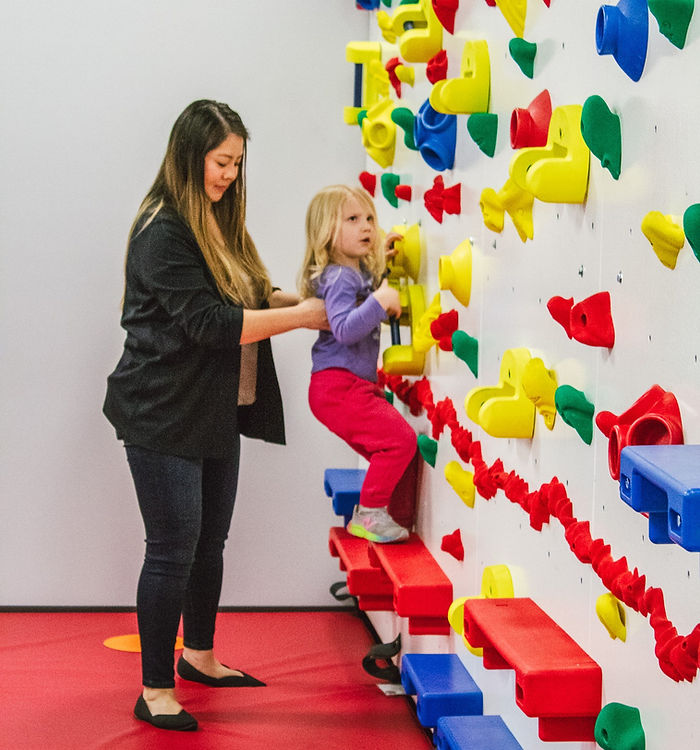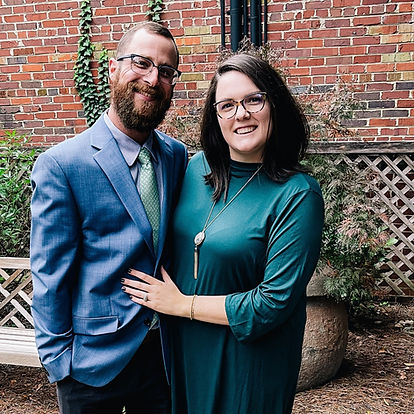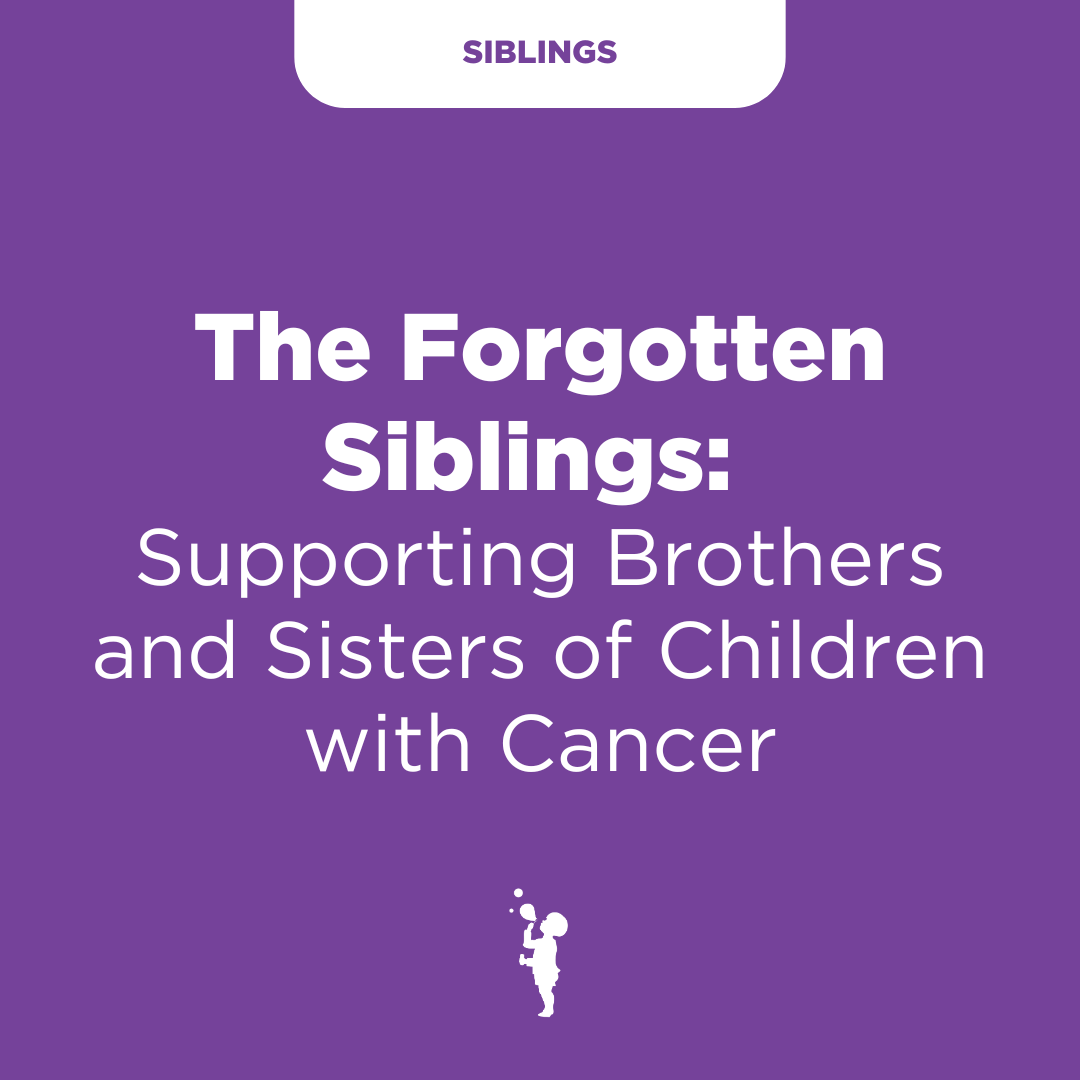Occupational Therapy: How It Can Help Pediatric Oncology Patients
A cancer diagnosis and subsequent treatments have the potential to precipitate side effects that can greatly impact a person's mental and physical well being. These side effects can occur not only during treatment but months and years into survivorship.
Effects of Cancer Treatment
Chemotherapy side effects such as fatigue or numbness and tingling in hands could cause impairment in an individual's fine motor skills. Surgery can also have a major impact on a person's physical well being in association with the loss of a limb, loss of motor function in an extremity, or sensory loss. These changes to a person’s physical, sensory, social, or cognitive function can affect many aspects of normal life, also known as "occupations". Occupations, or meaningful activities, include the ability to dress, use the restroom, perform daily hygiene, cook and clean, drive, and go to the store for essentials, all of which are very important. Pediatric patients will likely have a team of caregivers and healthcare professionals willing and able to help with many of these tasks so how can occupational therapy help the pediatric oncology patient population? Cancer, chemotherapy, and surgery can inhibit independence which is where occupational therapy can help the pediatric oncology patient population.

Why is Occupational Therapy Important?
Occupational therapy (OT) is broadly defined as a branch of the rehabilitative team that focuses on an individual's ability to complete everyday activities most often utilized during and after a change in an individual's state of mental or physical well being. OT for the pediatric oncology patient population would focus on play and helping children learn to do activities independently. Pediatric occupational therapists can take a task that seems automatic for almost everyone and dissect it into the smaller skills that are required to complete the task. By doing this, they are able to assist in helping develop and strengthen any certain smaller skill needed to complete the larger task. One goal of OT with the pediatric patient population would be for children to gain confidence in themselves so that they are able to reach developmental milestones and succeed at whatever stage of life they are in.
OT in children focuses of many things such as:
- Fine motor skills: learning to pick up small toys, buttoning shirts or pants, brushing teeth, cutting with a knife or scissors, zipping a zipper, using a fork or spoon.
- Gross motor skills: kicking a ball to play soccer, hand-eye coordination to play tennis, strengthening and conditioning in order to resume a previous active lifestyle
- Thinking and learning skills, also known as cognitive skills
- Attention and behavioral issues
- Social skills and emotional regulation
- Life skills such as cooking cleaning and driving (for teens)
- Providing equipment or modifications to help with daily activities
- Sensory Processing preferences
Finding an Occupational Therapist
Now the trickier part, establishing care with an OT. Some things you might be wondering, how do you find an OT? Will insurance cover the cost of the appointments? What do those appointments look like? Finding an occupational therapist can be as easy as an internet search in your area for a pediatric occupational therapist, from there you can call to check appointment availability and inquire if they specialize in treating pediatric oncology patients. There is also the option to check with your oncologist's office or hospital's rehabilitation department to see who they would recommend. Likely the least favorite thing to think about would be the cost of OT appointments and if insurance will help cover this medical expense. From my experience as an oncology nurse, many insurances do cover OT as an extension of home health in the adult oncology population. Most visits are two to three times per week in the patient's home or in an outpatient clinic. OT appointments would generally be covered under insurance, but if not, there are likely financial resources that your oncologist or hospital can provide to you to help offset any costs not covered by insurance. If you are familiar with your insurance providers website you could go to the website and search in-network occupational therapist and from there see the insurance coverage and cost of occupational therapy. Once you have found an occupational therapist, the next step would be to make the initial OT appointment.
For families specifically dealing with the effects of a pediatric cancer diagnosis: your family can receive OT services at completely no cost (not even insurance will be billed!) through the Austin Hatcher Foundation (AHF).

AHF has the ability to provide in-person occupational therapy sessions free of charge for families dealing with the effects of childhood cancer. There is a large OT gym equipped with a rock wall, a variety of swings, a large ball pit, and much more to help children work on their unique occupational needs. The AHF team has a full-time occupational therapist on staff to work with kids individually, in a small or large group setting. For those who do not live near TN or GA, AHF has several occupational therapy written resources on their website, and the Foundation can provide virtual therapy sessions for those who do not live in the area. Please contact AHF anytime to see if they can help assist or meet your OT needs: (423)243-3471.
What does an OT appointment look like?
The first occupational therapy appointment will be an evaluation. The evaluation will usually include testing, observation through play, and obtaining medical history. It is encouraged that children wear comfortable clothes for occupational therapy appointments. The first appointment will be a time for you and the occupational therapist to discuss information about the patient's interests, health history and activities of daily living. Questions will be asked about eating habits, emotional regulation, likes/dislikes for activities, sensory preferences, personal boundaries, fine motor skills, coordination, and task completion. An occupational therapist will then observe you or your child in a therapy setting. The therapist will look at things such as movement, balance, coordination, and ability to accept direction. The initial evaluation will be used to find strengths and weaknesses. An occupational therapist should collaborate with you and/or your child to develop a treatment plan best suited for you or your child to develop and grow in whatever stage of life.
Positive Effects of OT
OT is a resource that, when utilized, can have outstanding, long lasting, and positive effects on patients. OT can help a bed-bound patient sit, a wheelchair bound patient stand, or help someone who has lost a limb confidently walk again. The occupational therapy process can bring confidence and independence back to a person who has felt helpless and as an oncology nurse, that is exactly what I would want for any of my patients.

About the Author
My name is Rachel. I am a registered nurse and I have a passion for oncology nursing. I received my BSN from The University of South Carolina in 2012 and my MSN in Nursing Administration from the University of Alabama in Huntsville in 2019. My very first job as a new graduate was on an inpatient medical oncology floor. I fell in love with the patients, their families, and the love and care all the doctors and nurses showed not only the patients but each other. I never wanted to leave that environment so I devoted myself to becoming an oncology nurse. I am currently taking my knowledge base and pursuing my passion to write to embark on the journey to becoming a freelance nurse writer.
This article was reviewed and edited by:
Anna Fung, OTD, MOT, OTR/L, Occupational Therapist, Austin Hatcher Foundation
Shayna Webb, Marketing Coordinator, Austin Hatcher Foundation


.png)


.png)